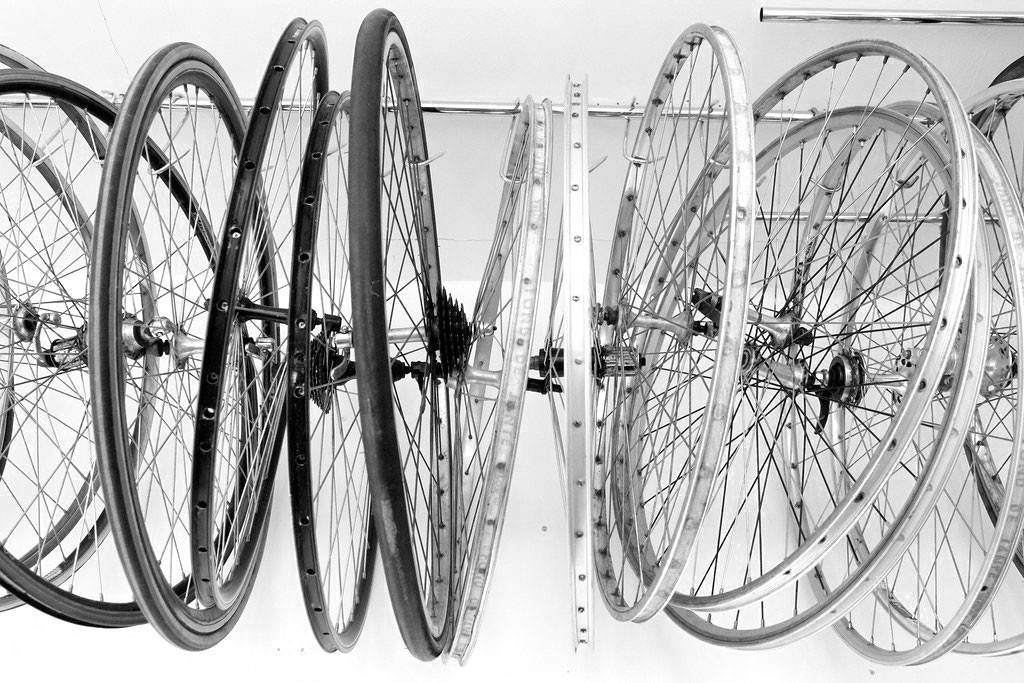Navigating the world of bicycle wheel sizes can initially feel overwhelming. From mountain bikes to folding bikes, and even children’s cycles, a vast array of wheel diameters exist. You might be wondering why there are so many options, and what the differences truly mean for your riding experience. This Bike Wheel Size Guide is designed to demystify the topic, explaining everything you need to know about bicycle wheel sizes and help you understand what’s best for your cycling needs.
Exploring Smaller Bike Wheel Sizes
16-inch Wheels (ISO 305 mm)
Often seen on children’s bikes, 16-inch wheels are among the smallest available for adult bicycles. Primarily used in folding bikes where compactness is key, they do compromise ride quality. While ideal for young children learning balance, 16-inch wheels struggle on uneven surfaces. Their small diameter makes them susceptible to bumps and road debris; even minor obstacles can significantly impact the ride, and potholes pose a considerable hazard.
Riding a bike with 16-inch wheels feels markedly different from a full-sized adult bike. The smaller turning radius and wheelbase lead to very sensitive steering. Additionally, to achieve comparable speeds to larger bikes, smaller wheels necessitate higher gear ratios. This increased gearing makes hill climbing considerably more challenging.
20-inch Wheels (ISO 406 mm)
The standard size for BMX bikes and a prevalent choice for small-wheel folding bicycles, 20-inch wheels are favored in BMX for their enhanced maneuverability, facilitating flatland and aerial tricks. However, for everyday cyclists, they retain some of the drawbacks associated with smaller wheels. While an improvement over 16-inch wheels, 20-inch wheels are still more affected by road imperfections compared to standard larger sizes. These smaller wheels also demand specific frame geometries and elongated handlebar stems to ensure a comfortable, upright riding posture. This configuration can sometimes amplify handling issues and introduce unwanted flex within the steering and frame assembly.
ISO 451: It’s important to note the existence of a slightly larger 20-inch wheel variant, the ISO 451 rim. Used in some racing BMX bikes and older British shopping bikes, ISO 451 wheels are less common in contemporary bikes. Generally, a 20-inch wheel typically refers to the ISO 406 standard.
24-inch Wheels (ISO 507 mm)
Less common than other sizes, 24-inch wheels are most frequently found on junior mountain bikes and select BMX “cruiser” models designed for larger riders who prefer the geometry and agility of 20-inch bikes. With the increasing popularity of youth racing and higher-spec components for children’s mountain bikes, the 24-inch junior mountain bike category is experiencing growth.
Standard Full-Size Bike Wheels
26-inch Wheels (ISO 559 mm)
26-inch wheels boast a rich history in cycling. Originally the standard for American cruiser bikes nearly a century ago, they evolved into the dominant mountain bike wheel size for decades. When pioneers like Joe Breeze, Charlie Kelly, and Gary Fisher built the first mountain bikes, 26-inch cruiser wheels were the only available option with tires wide enough for off-road conditions. As the mountain bike standard, this size is also utilized in high-performance folding bikes, such as Montague’s Paratrooper series.
Confusingly, the term “26 inch” refers not to the actual wheel diameter, but rather the approximate outer diameter of the tire designed for this wheel size. The true ISO diameter of a traditional 26-inch wheel is 559 millimeters.
27.5-inch / 650b Wheels (ISO 584 mm)
Bike wheel size nomenclature can be particularly confusing due to multiple names for the same size. Wheels with an ISO diameter of 584 mm were initially known as 650b, first appearing on French touring bikes in the 1960s. Slightly smaller than modern road bike wheels, they were used on smaller road frames that couldn’t accommodate 700c wheels. While still called 650b on road and gravel bikes, the mountain bike industry adopted and renamed this size.
In recent years, mountain bikes have trended towards larger wheels, and 650b was repurposed for off-road use, becoming known as 27.5 inches. Compared to the previously dominant 26-inch wheels in mountain biking, 27.5-inch wheels offer several advantages. These include improved roll-over capability on obstacles, a larger tire contact patch for enhanced traction, and greater rotational inertia for maintaining momentum. The Montague Paratrooper Highline and Paratrooper Elite models feature 27.5-inch wheels, marking them as the first folding bikes to adopt this size.
29-inch / 700c Wheels (ISO 622 mm)
Here, we encounter two more common wheel sizes that are, in fact, identical! The standard modern road bike wheel has an ISO diameter of 622 mm and is referred to as 700c. The origin of this name is complex, stemming from international tire sizing where the approximate outer diameter would be 700mm, with various rim sizes labeled 700a, 700b, 700c, and so on. While other variations faded, the 622 mm rim became standard for narrow road tires. Nearly every adult bike designed for pavement now comes with 700c wheels, including Montague’s Pavement series of folding bikes. Utilizing this full-size wheel provides superior performance and ride quality compared to small-wheel folding bikes.
Just as 650b wheels were adopted by mountain bikers as 27.5 inches, 700c wheels have surged in popularity in mountain biking, becoming known as 29 inches. All the benefits of larger wheels are amplified in 29-inch (or 29er) mountain bikes. However, some riders find the trade-off in maneuverability and turning radius less desirable. Although both 29-inch and 700c wheels share the same 622mm diameter, rims for mountain bikes are generally wider to accommodate wider tires.
27-inch Wheels (ISO 630mm)
The ISO 630mm size is largely obsolete today but deserves mention due to the prevalence of “27 inch” wheels on American road bikes from the 1970s and 80s, many of which are still in use. The rim is slightly larger than modern 700c wheels, a fact often discovered when attempting to fit a new road tire. Tire manufacturers still produce 27-inch tires due to the number of these older wheels still in circulation. If you need a replacement tire for a vintage steel road bike, your local bike shop can order one.
Oversized Bike Wheels
32-inch (ISO 686 mm) and 36-inch (ISO 787 mm)
While extremely rare, custom-built frames for very tall riders sometimes utilize 32-inch or 36-inch wheels. These sizes are almost never found on production bikes, but if you are over 6′ 6″ and seeking a properly fitting bike, custom builds might be necessary. A quick search for “Shaq Bicycle” reveals various custom bikes built for NBA legend Shaquille O’Neal. While the wheels appear proportional to these frames, they are indeed massive 32-inch and 36-inch sizes.

